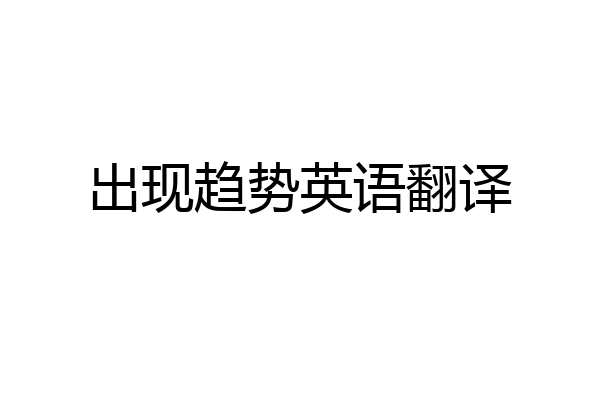
小小雯紫
1、具体含义不同
trend指事物发展总的方向、倾向或趋势。tendency指固有或习得的倾向性,强调没有外来的影响或干扰。
2、使用场合不同
trend偏口语,使用较为广泛;tendency偏书面语,有包含严谨推理后总结出趋势的意思。
例句:
They represent a new trend in urban life, he said.
他们在城市生活中代表了一种新的趋势,他说。
The present development and tendency of new materials used in large aircraft are introduced.
介绍了用于大型飞机的新材料的发展现状和趋势。
扩展资料
词汇解析:
1、trend
英文发音:[trend]
中文释义:n.趋势;趋向;倾向;动态;动向
例句:
The rise, the first in 10 months, reversed the downward trend in Belgium's jobless rate.
10个月来失业率的首次上升逆转了比利时失业率持续下降的趋势。
2、tendency
英文发音:[ˈtendənsi]
中文释义:n.倾向;偏好;性情;趋势;趋向;(政党内的)极端派别
例句:
Finally this paper discusses the research, application and development tendency of precision agriculture.
最后论述了精细农业的研究、应用及发展趋势。


sunny小波
一、词义辨析不一样
trend,tendency这两单词的名词均含“趋势,倾向”之意。
1、trend指事物发展总的方向、倾向或趋势。如:
The trend of prices is still upward.
物价仍有上涨趋势。
2、tendency指固有或习得的倾向性,强调没有外来的影响或干扰。如:
Today there is a tendency for people to opt out of social activity.
现在,越来越多的人倾向于不参加社会活动。
二、词义广泛性不一样
trend
英 [trend] 美 [trɛnd]
1、n.趋向;走向;时尚,时髦
2、vi.趋势;倾向
tendency
英 [ˈtendənsi] 美 [ˈtɛndənsi]
n.倾向,趋势;(话或作品等的)旨趣,意向;性情;癖好
三、变形词不一样
trend
第三人称单数: trends 复数: trends 现在分词: trending 过去式: trended 过去分词: trended
tendency
只有复数: tendencies

subluevoyage
区别一:两者读音不同。
trend:英 [trend] 美 [trɛnd]
tendency:英 [ˈtendənsi] 美 [ˈtɛndənsi]
区别二:两者词性不完全相同。
trend:既是名词,也是不及物动词。
tendency:只能做名词。
区别三:两者含义不同。
trend:作为名词时,有“趋向;走向;时尚,时髦”的意思;作为不及物动词时,有“趋势;倾向”的意思。
例句:One region is attempting to buck the trend of economic decline.其中一个地区正试图挡住经济衰退的趋势。
tendency:倾向,趋势;(话或作品等的)旨趣,意向;性情;癖好。
例句:I have a tendency to talk too much when I'm nervous.我紧张时总爱唠叨。
区别四:两者都作为名词,且都表示“趋势”时的性质也不同。
trend:指事物发展总的方向、倾向或趋势,它指的是整个社会或者比较大群体的一种趋势或者潮流。
例如:The current trend is towards informal clothing.目前的趋势是穿着比较随便。
tendency:指固有或习得的倾向性,强调没有外来的影响或干扰,一般指的是人有某种倾向性或者某种趋势。
例如:He had a tendency to shrink up whenever attention was focused on him.当别人注意他时,他就会退缩一旁。
优质英语培训问答知识库